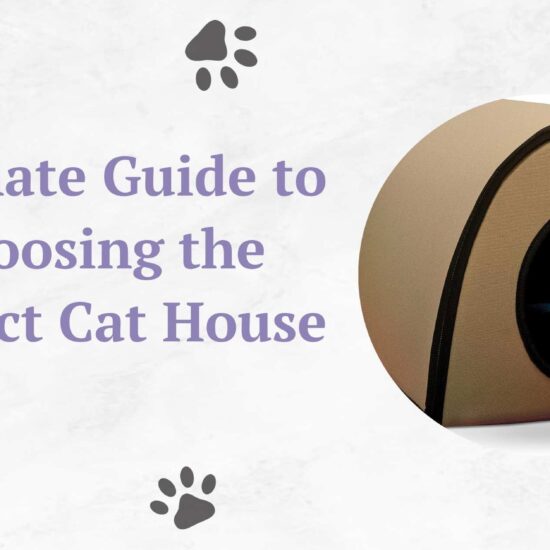As a dog owner, one of your most important jobs is to make sure your furry friend is happy and healthy. Focusing on things like food, exercise, and cleaning is good, but it’s important not to forget about dog ear care , which is often overlooked.
Table of Contents
Introduction
Ear infections in dogs are a regular problem, and if you don’t treat them, they can cause a lot of pain and discomfort. In this detailed guide, we’ll talk about dog ear care and give you useful information, tips, and ways to avoid and treat ear infections in dogs.
Understanding Dog’s Ear Anatomy

A dog’s ears are made in a complicated way, and they are used for more than just listening. Before getting into dog ear care , it’s important to understand how they work. This basic knowledge not only helps you understand how complicated their hearing system is, but it also helps you spot possible problems and give better care.
Pinna (The Outer Ear)
- The outer ear, also called the pinna, is the part of your dog’s ear that you can see and recognize the most.
- This outside structure is made of cartilage, and a layer of skin covers it.
- Even though it looks like a simple flap, the pinna is a very important part of hearing.
- The pinna’s main job is to pick up sound waves from the surroundings and direct them toward the ear canal.
- Its form and orientation change between breeds, which helps them hear sounds in their own unique ways.
- Aside from letting sound in, the pinna also protects the delicate structures inside the ear by keeping foreign items and debris away from them.
Ear Canal
- The ear canal, also called the external auditory canal, is under the pinna. This path goes from the part of the ear that can be seen to the deeper parts of the head.
- The ear canal is lined with skin, and inside the skin are cells that make earwax, which is called cerumen by professionals.
- The ear canal is a very important part of hearing. It acts like a pipe, carrying sound waves from the pinna to the middle ear.
- The skin that lines the ear canal has tiny hair-like structures and glands that help trap and get rid of dirt and extra earwax. This helps keep the ears clean.
- Even though the ear canal is important for hearing, it can also cause ear infections in dogs, like blockages from too much wax or illnesses from bacteria or yeast.
- These problems can make your dog uncomfortable and may need treatment to make sure the ear canal stays healthy.
Middle Ear
- The middle ear is further inside the head than the ear canal.
- The eardrum or tympanic membrane, is a thin, delicate membrane that separates the middle ear from the ear canal.
- This membrane acts as a buffer between the outer ear and the middle ear, protecting the sensitive structures in the middle ear.
- The three tiny bones in the middle ear are called ossicles. They are one of the most important parts of the middle ear.
- The malleus (hammer), incus (anvil), and stapes (stirrup) are the three bones that make up this chain-like structure in the middle ear.
- Sound waves make the eardrum move when they hit it. The movements are then passed along the ossicles, where they make the sound louder.
- The middle ear’s main job is to turn sound waves from the outside world into mechanical movements that the inner ear can then use.
- Hearing loss can be caused by any problem with or damage to the eardrum or ossicles.
Inner Ear
- Inside the dog’s head, even deeper, is the inner ear, a spiral-shaped cochlea, which looks like a snail’s shell, is present.
- The cochlea is a very important part of how they hear. When mechanical vibrations from the middle ear reach the cochlea, they start a complicated process of turning sound vibrations into electrical messages.
- This is the first step in the brain’s understanding and making sense of sounds.
- In addition, the inner ear does more than just help hear. It also helps maintain balance. Structures in the inner ear called the vestibular system are in charge of this function.
4 Most Common Ear Infections in Dogs

As a responsible owner, you need to know about the most common ear infections in dogs. For your furry friend’s happiness and well-being, it’s important to catch problems early and act quickly. Here, we’ll talk about some of the most common ear problems with dogs’ and cats’ ears:
- Ear Infection (Otitis)
Ear infections, which are called “otitis” in the medical world, are one of the most common dog ear infections. It can have a number of causes, such as an overgrowth of bacteria, yeast, or fungi, allergies, foreign objects in the ear, or even a hormonal imbalance.
It’s important to know the signs of an ear infection so that you can get help right away.
Symptoms:
- Typical signs include redness and swelling in the ear canal, a bad smell coming from the ear, excessive scratching, head shaking, and an abnormal discharge, which can be anything from watery to pus-like.
Dog ear infections can be very painful, and if they aren’t handled, they can lead to bigger problems. A vet will usually tell you to clean the ear canal, maintain proper dog ear care and give you medicine like ear drops or antibiotics that you take by mouth.
- Ear Mites
Ear mites are tiny bugs that live in the ear canals of cats and dogs, especially. These tiny bugs, called Otodectes cynotis, can cause a lot of irritation, pain, and itching in the ear.
Symptoms:
- When dogs have ear mites, they often do strange things like scratch their ears very hard, shake their heads, and tilt their heads.
- These bugs are very contagious and can easily spread from one animal to another through close touch.
- A veterinarian will usually do a full ear exam and may take a sample to look at under a microscope to see if there are ear mites.
To get rid of mites successfully, most treatments involve putting parasiticides on the skin or giving medicines by mouth but to prevent them, you must also ensure dog ear care.
- Allergies
Different parts of a dog’s body can show signs of an allergic reaction, and the ears are no exception. Dogs can have allergies to many things, like certain foods, pollen, dust mites, and things in their surroundings.
Symptoms:
- When dogs have allergies, their immune systems overreact to the allergens, causing swelling and pain that can spread to their ears.
- Common symptoms of allergic ear infections in dogs are itching that doesn’t go away, redness, and swelling.
- Many dogs with allergies get repeated ear infections because their ears become more susceptible to bacterial or yeast overgrowth when they are inflamed.
To treat allergic ear infections in dogs, you have to find and deal with the specific allergen causes. Tests like blood work or skin tests can help your vet figure out if your dog has allergies. Changes to food, avoiding allergens, and taking medicine can help relieve symptoms and prevent further ear infections in dogs.
- Excessive Ear Wax
Too much earwax, or cerumen, can build up in a dog’s ear canal, causing pain and possibly making it hard for them to hear. Wax buildup can be caused by a number of things, such as natural changes in wax production, breed-specific traits, or a lack of dog ear care.
Symptoms:
- Dogs with too much wax in their ears may tilt their heads, shake their heads more, and rub or scratch at their ears.
If this problem isn’t fixed, it can make the ear canal a good place for bacteria or yeast to grow and cause a long term illness.
Most of the time, cleaning your dog’s ears gently is the best way to get rid of wax buildup. But it’s very important to talk to your vet before you try it at home. They can tell you how and what to use to clean your dog’s ears so you don’t hurt the delicate structures inside.
5 Essential Steps for Dog Ear Care

Dog ear care is a responsible way to make sure your furry friends are healthy and happy. When it comes to dog ear health, the old saying “prevention is better than cure” is especially true. By taking certain precautions, you can avoid dog ear infections to a great extent.
Here are 5 essential steps for dog ear care:
- Regular Checkups of the Ears
Checking your dog’s ears often is a basic preventive step that can make a big difference in how healthy their ears are. Make it a habit to gently look in your dog’s ears for signs of possible problems. Look closely at the following:
- Redness: Redness or inflammation in and around the ear can be a sign of a deeper problem.
- Swelling: Any odd swelling or puffiness around the ears needs to be taken care of right away.
- Ear Discharge: Check to see if there is any fluid coming from the ear. If you have a strange discharge, especially if it is thick, colored, or smells bad, it could be a sign of an illness.
- Bad Smell: A strong, bad smell coming from the ear can be a sign of dog ear infections or something else wrong.
It’s important to notice these signs as soon as possible so that, if needed, you can get your dog to a vet right away and stop the problem from getting worse.
- Clean their Ears from Time to Time
Depending on the type of dog, how they live, and how likely they are to get ear problems, you may need to clean their ears from time to time. But it’s important to be careful when cleaning your dog’s ears, because using the wrong methods or products could hurt your dog’s ears.
Here are some safe ways to clean a dog’s ears:
- Use Veterinary-Recommended Products: Ask your vet for suggestions on good ear cleaning solutions. Don’t use harsh or over-the-counter items without getting advice from a professional.
- Proper Technique: Learn the right way to clean your dog’s ears, and do what your vet tells you to do. Most of the time, this means putting the cleaning solution on softly and massaging the base of the ear to get rid of dirt.
- Don’t Use Cotton Swabs: Never put cotton swabs or anything else in your dog’s ear. Doing so can push dirt deeper into the ear canal and hurt the eardrum.
When your vet tells you to, regular, gentle cleaning can help keep wax from building up and lower the risk of ear infections.
- Provide a Good Diet and Take Care of Allergies
A healthy, well-balanced diet is very important for your dog’s general health and immune system. Talk to your vet to find out what the best food choices are for your dog. Some cats have allergies or sensitivities to food that can show up in their ears.
Some of the most common signs that a dog has a food allergy are constant itching, skin problems, and ear infections. If your vet thinks your dog has food allergies, they may suggest making changes to your dog’s diet or giving them a special diet.
Your dog’s ears can also be hurt by allergies to things in the environment, like pollen or dust. If you notice allergy signs like redness or itching in the ears, talk to your vet about how to treat the allergy. This may include medication or making changes to the environment.
Dog ear infections can be prevented, especially in long-haired dogs, by taking proper care of them. Keeping your dog’s fur clean and well-kept can make it less likely that dust and allergens will get into its ears.
When you brush and groom your dog on a regular basis, you can remove dirt, debris, and allergens from its hair. Keeping the hair around the ears clipped can also improve air flow and stop moisture from building up, which can help prevent dog ear infections.
- Avoid Water Exposure
If your dog likes to swim or gets wet often, you should take steps to keep water from getting into their ears. When the ear canal stays wet for a long time, it can be a good place for germs and yeast to grow, which can make infections more likely.
Think about using wipes or solutions that are made to dry your dog’s ears after they’ve been in the water. These items can help get rid of too much moisture in the ear canal and lower the chance of getting an infection.
5 Steps to Dog Ear Infection Treatment

Even if you take good care of your dog, it may get an ear infection at some point. This is painful and annoying for your furry friend. Ear infections are common in both dogs and cats. They can be caused by germs, yeast, or allergies, among other things. In this detailed guide, we’ll talk about how to handle and treat ear infections in dogs so that they stay healthy and happy.
- Seek Advice From Vet
If you suspect a dog ear infection, you should make an appointment with your vet right away. A veterinarian’s skills are needed to correctly diagnose the infection and make sure the treatment fits your dog’s needs.
Usually, the following steps are taken during the medical exam:
Thorough Ear Examination: The vet will carefully check your dog’s ears for signs of infection, like redness, swelling, discharge, or a bad smell. They may use special tools, like an otoscope, to look inside the ear canal and at the eardrum.
Sample Taking: The vet may take a sample from your dog’s ear to figure out what kind of illness it is (bacterial, yeast, or both). This sample will either be looked at through a microscope or sent to a lab to be tested.
Root Causes: The vet will also look for any underlying causes or contributing factors, like allergies or foreign items in the ear, that may need to be taken care of as part of the treatment plan.
- Medications
Once the vet has confirmed an ear infection in the dog, they will give your dog the right medicine to treat the problem. What kind of medicine is given will depend on what kind of illness it is.
Some common drugs used to treat ear infections in dogs are:
Ear Drops: To treat the infection directly, antibiotics, antifungals, or a mix of the two are often put in ear drops. When giving these drops, it’s important to carefully follow the veterinarian’s advice. If you don’t, they might not work or even hurt your dog.
Oral Antibiotics: Sometimes, especially when the infection is severe or has spread beyond the ear canal, oral antibiotics may be given. Even if your dog’s symptoms get better, you must finish the full course of medicines as directed. When antibiotics are stopped too soon, bacteria can grow that can’t be killed by antibiotics.
Antifungal Medicines: If yeast is the cause of the problem, antifungal medicines may be prescribed. These medicines are made to find and kill the yeast that is causing the problem.
- Cleaning
If there is a lot of wax, dirt, or discharge in your dog’s ears, cleaning them may be an important part of the treatment plan. Your vet will tell you how to clean your dog’s ears the right way.
Here are some general tips for cleaning the ears of your dog:
Use Products Suggested by Your Vet: Always use dog ear cleaners and other products suggested by your vet. Don’t use over-the-counter products because they might not work for your dog’s situation.
Proper Method: Carefully follow your vet’s guidelines for cleaning your dog’s ears. Most of the time, you’ll be told to apply the cleaning solution, rub the base of the ear to loosen dirt, and then use a clean, soft cloth or cotton ball to wipe away any extra cleaning solution and loose dirt.
Approach With Care: Be careful when cleaning your dog’s ears so you don’t make them even more sore or hurt them. Never put cotton swabs or anything else into the ear canal of your dog.
Note: There might be affiliate links mentioned here. We may receive a commission if you purchase a product through an affiliate link. There is no additional charge for you. Please do your own research before making any online purchases.
- Taking Care of Pain
Dogs can hurt and feel bad when they have ear infections. Your vet may give your dog painkillers to make sure it stays healthy and happy during treatment. These medicines can help relieve pain and make them less likely to scratch or rub their ears, which could make the problem worse. Give your dog painkillers as your vet tells you to make sure he or she is comfortable while they are healing.
- Follow-Ups With the Vet
Ear infections in dogs can be hard to get rid of, and you may need to go back to the doctor more than once to check on your progress and make sure the infection is gone for good. Regular checkups with your vet are important so that you can see how your dog is responding to treatment and make any necessary changes.
During follow-up visits, the vet may check the ears again and suggest more cleaning or changes to the treatment. It’s important to keep an eye on your dog’s ears at home and tell your vet right away if anything changes or shows signs of coming back.
3 Types of Breed Specific Dog Ear Care

When it comes to taking care of your dog’s ears, there’s no one-size-fits-all solution. Due to the way their ears are built and their genes, different types of dogs and cats are more or less likely to have ear problems. To make sure your dog is healthy and happy, it’s important to know how to care for their ears based on their breed. Here, we look at some important things to keep in mind about each breed:
- Breeds With Floppy Ears
Some dog breeds, like Basset Hounds, Cocker Spaniels, and Beagles, are known for their cute, floppy ears. Even though these floppy ears make them look cute, they also make it hard to take care of their ears in certain ways.
The main problem with loose ears is that they tend to keep moisture in the ear canal and block airflow. This trapped wetness makes it easy for bacteria and yeast to grow, which makes these breeds more susceptible to dog ear infections.
Ear Care for Breeds with Floppy Ears
- Regular Cleaning: Do what your vet tells you to do to clean your dog’s ears regularly. Frequent cleaning can help keep wetness, dirt, and wax from building up, which lowers the risk of infections.
- Drying After Water Activities: If your dog with floppy ears likes to swim or gets wet often, make sure to dry their ears well after they’ve been in the water. When water stays in the ear, bacteria and yeast can grow there. Use solutions or wipes made just for this reason to dry out your ears. To keep your dog’s ears from getting irritated, avoid activities or substances like excessive scratching or contact with allergens. Fix any itching or pain right away to prevent ear infections.
- Breeds with Long Hair
Long-haired breeds like Shih Tzus, Lhasa Apsos, and Poodles can get more wax and dirt in their ears than other breeds. The long hair around their ears can trap dirt and make it hard to keep their ears clean.
Ear Care for Breeds with Long Hair
- Regular Cleaning: Keep a regular cleaning schedule to keep the fur around the ears clean and free of debris. Regular brushing and cutting can help keep hair out of the ear canal and keep air flowing well.
- Checking the Ears: It’s important to check your dog’s ears often. Check for signs of too much wax, dirt, or soreness. Early discovery lets people act quickly.
- Ear Cleaning: Your vet will tell you to clean your dog’s ears as part of your regular grooming practice. If you don’t want to hurt your dog’s ears, use ear cleaning products that your vet recommends and do it the right way.
- Breeds Susceptible to Allergies
Some dog breeds are more likely to get allergies, such as Bulldogs, Boxers, and Labrador Retrievers. Dogs can have different kinds of allergic reactions, such as skin problems and ear problems. When dogs of these types get allergies, their ears can be affected in a big way.
Ear Care for Allergy-Prone Breeds
- Management of Allergies: Work closely with your vet to effectively handle your dog’s allergies. It is very important to find and deal with specific allergen triggers, like certain foods or surrounding factors. To treat ear problems caused by allergies, your vet may suggest dietary changes, allergy tests, and the right medicines.
- Inspections of the Ears: Check your dog’s ears regularly for signs of heat, inflammation, or pain. To keep allergic reactions from causing ear infections, it’s important to take action as soon as possible.
- Keep the Ears Clean: If your dog has allergies or ear problems, your vet may suggest cleaning the ears regularly to keep them healthy and lower the chance of infections.
Do-It-Yourself vs. Professional Ear Care for Dogs

When it comes to dog ear care, you may find yourself at a crossroads, not knowing if you should do it yourself or hire a professional. For your dog’s ear health and general well-being, it’s important to know when you can take care of things yourself and when it’s best to rely on the expertise of a vet or professional groomer. Let’s talk about the pros and cons of DIY (do-it-yourself) ear care and when you should see a professional:
Do-It-Yourself Dog Ear Care
Routine ear cleaning is an important part of caring for your dog’s ears, and you can often do it at home as long as you follow the right steps and use the right tools. Here are some important things to remember:
Frequency: Different dogs need their ears cleaned at different times. Talk to your vet to figure out what plan is best for your dog. Some dogs, especially those with ear problems, may need to be cleaned more often.
Advice from the Vet: It’s important to get advice from your doctor on the right way to clean your dog’s ears and which products to use. Your vet can suggest good solutions and give you directions that are made for your dog’s needs.
Approach with Care: Always be gentle and patient when cleaning your dog’s ears at home. Don’t use cotton swabs or anything else that could hurt the ear canal’s delicate parts. Instead, use a soft cloth or cotton ball to wipe away any leftover cleaning solution and loose dirt.
Maintenance: Cleaning your ears yourself can be used as a preventative step to lower the risk of wax buildup and infections. Regular maintenance can also be a way to bond with your dog, as long as you do it gently and don’t make it hurtful.
When to Seek Professional Ear Care for Dogs
In some cases, ear care can only be done well with the help of a professional. Here are some times when you might want to call a vet or a skilled groomer:
Buildup of a Lot of Wax or Debris: If your dog’s ears have a lot of wax, debris, or foreign objects that you can’t remove safely and properly at home, it’s time to see a vet. Trying to get rid of stubborn blockages without the right tools or knowledge can hurt your dog and cause more problems.
Recurring Ear Infections: If your dog keeps getting ear infections despite your best efforts to take care of them at home, it’s a sign that they need to be checked out by a vet and given professional treatment. Repeated infections can be a sign of deeper problems that need to be diagnosed and treated by a vet.
Pain or Soreness that Doesn’t Go Away: If your dog’s ears hurt, look red, swell up, or have a foul-smelling discharge, you should take them to the vet right away. These signs could mean your dog has an active infection or other major problems with their ears that need to be checked out by a doctor.
Veterinarians and professional groomers have the knowledge and special tools needed to clean and treat dog ears well. They can give your dog a full ear exam, give the right treatments, and keep your dog safe and comfortable the whole time.
Professional Ear Care for Dogs
When dealing with dog ear infections or any other signs of illness, pain, or discomfort, you should always see a vet. Here are some important things to think about:
Consult Your Vet: Make an appointment with your vet as soon as you notice any signs of dog ear infections, illness, pain, or discomfort of any kind. They will do a thorough check to figure out what the problem is.
Treatment Plan: Your vet will make a custom treatment plan for your dog, which may include antibiotics or drugs that kill fungi. Follow the treatment plan exactly and take all of the medicine, even if the symptoms start to get better.
Follow-Up Care: Dog ear infections can be hard to get rid of and may need more than one visit to make sure the infection is gone. Keep an eye on your dog’s ears for any signs that the problem is coming back, and tell your vet right away if anything changes.
3 Essential Tips for Stress Free Dog Ear Care
Taking care of your dog’s ears is an important part of making sure they are healthy and happy generally. But it can be hard to do, especially if your dog is not used to having his or her ears cared for. Consider the following tips to make sure that you and your dog have a stress-free time:
- Positive Reinforcement
Positive feedback is one of the best ways to make dog ear care a stress-free experience. By giving your dog treats and compliments when you clean its ears, you can help it feel more comfortable during the process. Here’s how positive reinforcement works:
Treats and Praise: Give your dog its favorite treats and lots of verbal praise during and after ear cleaning. This makes your dog think that the experience was good, which will make it easier in the future.
Consistency: Be consistent with how you reward good behavior to reinforce it. Over time, your dog will learn that when they help you clean their ears, they get fun treats.
Be Patient: Some dogs may need more time to get used to ear care habits. Even if your dog tries to stop you at first, be patient and keep offering positive feedback.
- Patience
You need to be patient with dog ear care. You and your dog can both feel anxious and stressed out if you rush through the process. Here are some ways to take your time and make dog ear care more relaxing:
Gradual Start: If your dog isn’t used to having their ears cleaned, start by easing them into the process. Start with short lessons that don’t hurt them, like touching their ears or showing them the solution for cleaning their ears without actually using it.
Slowly move on to more complicated ear care jobs, like gently cleaning or putting medicine in the ear. Before moving on to the next step, you should always make sure that your dog is happy with the last one.
Calm Environment: Pick a quiet, calm place for dog ear care. Reduce distractions and create a calm environment for your dog to help it feel at ease.
Gentle Touch: When you approach your dog, be cool and use a gentle touch. Talk to them in a calm voice to comfort them and make them feel better.
Consistency: Consistent sessions are the best way to get your dog used to ear care methods. Regular, short practices work better than long ones that don’t happen very often.
- Get Help From Professionals When Facing Difficulties
Even if you try your best, your dog may become very scared or aggressive when you try to clean its ears, or the state of its ears may get worse despite your efforts to care for them at home. In these situations, it’s important to get help from a professional:
Professional Trainers or Behaviorists: A professional trainer or behaviorist can look at your dog’s behavior and give you tips on how to make him or her less anxious and angry while cleaning the ears. They can show you how to train your dog in a way that makes it more comfortable with the process.
Help from a Vet: If your dog’s ear infection is hard to treat or keeps coming back, you should ask your vet for help. Your vet can offer you other ways to treat your dog’s ear infection, suggest sedation if it’s needed, or even care for your dog’s ears in a controlled clinical setting.
Medication or Sedation: If your dog’s fear or anger is so bad that it presents a safety risk, your vet may suggest medication or sedation to make ear care easier. This should only be done with the help of a professional.
FAQs
How do I detect ear infections in dogs?
Ear infections in dogs are often observed with redness and swelling in the ear canal, a bad smell coming from the ear, a lot of scratching and shaking of the head, and odd discharge.
How do allergies affect a dog’s ears, and what are the most common signs of ear allergens?
Dogs can have problems with their ears, like itching, redness, and swelling, when they have allergic reactions. Allergies can also lead to recurrent ear infections.
What can cause too much wax to build up in a dog’s ears, and what could happen if it keeps building up?
Too much wax can build up in a dog’s ears because of natural differences in wax production, breed-specific habits, or because the ears aren’t cleaned well enough. This buildup can make your dog’s ears hurt and make them more likely to get an ear infection.
How can the way you clean your dog, especially long-haired breeds, help keep their ears healthy?
By brushing and cutting regularly, you can keep dust and allergens from getting into the ear canal. This makes it less likely that the dog will have ear problems, especially in long-haired breeds.
What should dog owners do to make sure their dog’s ears don’t get too wet after playing in the water?
Dog owners should think about using special solutions or wipes to dry their dogs’ ears after they’ve been in the water. This will remove extra moisture from the ear canal and lower the risk of infection.
How can making changes to a dog’s food help with allergies and, as a result, ear problems?
Changes to a dog’s diet that are suggested by a vet can help with food allergies, which may show up as ear problems. For allergy control, it’s important to find out what allergens set off your dog’s symptoms and deal with them.
When should I take my dog to the vet for an ear infection?
If you think your dog has an ear infection, you should see a vet right away. For your dog’s health, it’s important to find and fix problems as soon as possible.
What kinds of medicines are usually given to dogs to treat ear infections?
Ear drops with antibiotics, antifungals, or both are often used to treat ear infections in dogs. In serious cases, antibiotics or antifungal drugs that are taken by mouth may be given.
Which dog breeds are more likely to have allergies, and how do you take care of their ears?
Bulldogs and Boxers are more likely to have allergies than other breeds of dogs. To take care of your dog’s ears, work closely with your vet to find pollen triggers, check the ears regularly, and keep them clean.
What should dog owners think about when choosing whether or not to take their dogs to a vet for ear care?
Dogs should get professional ear care if they have a lot of wax or debris in their ears, recurrent ear infections, pain or soreness that doesn’t go away, or if they need special knowledge or tools.
Conclusion
Caring for your dog’s ears is an important part of being a good dog owner. You can help keep your dog’s ears healthy by knowing how their ears work, spotting common ear problems, and taking preventive steps. If an ear infection does happen, it’s important to see a vet right away and treat it carefully to ease the pain and avoid complications.
Remember that every dog is different, and their ear care needs may be different depending on their breed, age, and lifestyle. Keeping in touch with your vet and knowing what your dog needs will go a long way toward keeping their ears healthy and their health good in general. You can keep your furry friend’s ears clean, healthy, and free from pain if you know what to do and take good care of them.












